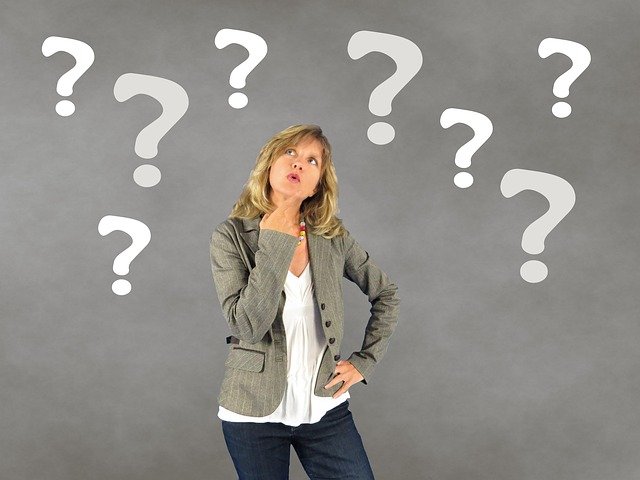Many people have asked me the following question: “How do adjectives work in French?” They’re a little bit different from adjectives in English. Since adjectives are one of the parts of speech, it’s essential to understand and master them.
Where do French adjectives go in a sentence? Are there any exceptions? What should I keep in mind when using French adjectives?
This may seem a little bit complicated, but some rules can help you better understand. Let’s answer the most common questions that French learners have about adjectives such as placement and gender. By the end of this post, you should have a better understanding of French adjectives. C’est parti!
Where Do Adjectives Go in a Sentence?
Let’s answer the most common question we get. Unlike English, French adjectives follow the noun they modify in most cases. In English, the adjective precedes the noun, but in French, it’s the opposite.
Examples:
voiture rouge –> red car
garçon intelligent –> intelligent/smart boy
vêtements chers –> expensive clothes
film ennuyeux –> boring movie
livre intéressant –> interesting book
Placement Exceptions

As with all French things, there are always exceptions to the rule. We mentioned that French adjectives go after the noun they modify most of the time. That means it’s not always the case.
A good rule of thumb to remember is the acronym BAGS:
Beauty: beau (handsome), belle (beautiful)
Age: jeune (young), vieux (old), nouveau (new)
Goodness: bon (good), mauvais (bad), meilleur (better)
Size: petit (small), gros (fat), haut (high)
A few adjectives don’t follow the rule: laid (ugly), affreux (atrocious), âgé (old), and méchant (mean).
In addition to the adjectives under BAGS, the following adjectives also go before the noun they modify: tout (all), autre (other), même (same), faux (false), tel (such).
Ordinal numbers such as premier (first), deuxième (second), troisième (third), etc., also precede nouns.
Before or After the Noun

Adjectives are not always black and white. The placement of some of them depends on the idea you want to express. Look at the following examples:
Jim est mon cher ami. Jim is my dear friend.
J’ai acheté un portable cher. I bought an expensive phone.
Tim est un homme pauvre. Tim is a poor man.
Ma pauvre soeur a beaucoup de travail. My poor sister has a lot of work.
Did you see the difference? In the examples above, we used the adjectives cher and pauvre. Cher can either mean dear or expensive, while pauvre can mean poor as in penniless or poor as in miserable. When you describe something or someone in a figurative or subjective way, you place the adjective before the noun. On the contrary, when your description is literal or objective, you place the adjective after the noun. This principle applies to the following adjectives:
ancien (former, old)
certain (some, sure)
cher (dear, expensive)
dernier (final, previous)
grand (great, tall)
pauvre (miserable, poor)
prochain [next (in a sequence), next/following]
propre (own, clean)
seul (only, alone)
simple (mere, simple)
All of the adjectives listed above can be placed either before or after the adjective depending on the idea/concept you want to express. The translations in parentheses include the two meanings: the first one is the figurative/subjective meaning, while the second one is the literal/objective meaning.
Making Masculine Adjectives Feminine

Do you remember that gender plays a big role in French? Practically everything in French is either masculine or feminine, and adjectives are no exception. How do we make masculine adjectives feminine? There are several rules we have to remember.
In most cases, we simply add -e to a masculine adjective to make it feminine. Examples:
intelligent –> intelligente (smart, intelligent)
vert –> verte (green)
amusant –> amusante (fun)
fort –> forte (strong)
If an adjective ends in -er, we change the ending to -ère. Examples:
fier –> fière (proud)
étranger –> étrangère (foreign)
léger –> légère (light)
If an adjective ends in é, we add e. Examples:
âgé –> âgée (old)
fatigué –> fatiguée (tired)
occupé –> occupée (busy)
When an adjective ends in -eux, we change the ending to -euse. Examples:
ambitieux –> ambitieuse (ambitious)
dangereux –> dangereuse (dangerous)
heureux –> heureuse (happy)
sérieux –> sérieuse (serious)
When an adjective ends in f, we change the ending to -ve. Examples:
actif –> active (active)
naïf –> naïve (naive)
neuf –> neuve (new)
If an adjective ends in a consonant, we double the consonant and add -e. Examples:
canadien –> canadienne (Canadian)*
bon –> bonne (good)
gentil –> gentille (kind)
gros –> grosse (fat)
*Nationalities are not capitalized in French.
The following adjectives are irregular:
| Masculine Singular Adjective | Feminine Singular Adjective | English Translation |
| beau | belle | handsome, beautiful |
| blanc | blanche | white |
| complet | complète | complete |
| doux | douce | sweet |
| faux | fausse | false |
| frais | fraîche | fresh |
| franc | franche | frank |
| inquiet | inquiète | worried |
| long | longue | long |
| nouveau | nouvelle | new |
| public | publique | public |
| sec | sèche | dry |
| secret | secrète | secret |
| vieux | vieille | old |
Three masculine singular adjectives change their spelling when preceding a noun starting with a vowel sound: beau, nouveau, and vieux. They become bel, nouvel, and vieil, respectively. Therefore, we have un bel homme (a handsome man), un nouvel article (a new article), and un vieil avion (an old plane).
Those adjectives ending in -e are used with both masculine and feminine nouns. Examples:
aimable (kind)
faible (weak)
maigre (thing)
moderne (modern)
pauvre (poor)
sale (dirty)
triste (sad)
Gender and Number Agreement
Adjectives have to agree in gender and number with the nouns they modify. In English, adjectives are invariable and don’t change if the noun is masculine/feminine or singular/plural. That is not the case with French. In French, adjectives can be masculine or feminine and singular or plural. Look at the following examples:
le portable bleu –> les portables bleus (the blue cell phone, the blue cell phones)
la petite voiture –> les petites voitures (the small car, the small cars)
la vue incroyable –> les vues incroyables (the incredible view, the incredible views)
l’homme intelligent, la femme intelligente–> les hommes intelligents, les femmes intelligentes (the intelligent man, the intelligent men, the intelligent woman, the intelligent women)
la robe chère –> les robes chères (the expensive dress, the expensive dresses)
Conclusion
As you can see, French adjectives are not that simple. They go after the noun most of the time, but in other cases, they precede them. Don’t forget that some adjectives can either precede or follow a noun depending on the concept you want to express.
Most adjectives have masculine and feminine forms, while a few can be used with both genders indistinctly. Remember adjectives have to agree with nouns in gender and number.
I hope this helps. Let me know if you have any questions. Au revoir, les amis!


I don’t know any french at all except “omelette du Fromage” and I honestly don’t know what it means but I think it means cheese omelette haha.
Jokes aside, I find it hard even on English to find the correct verb and adjectives and I hope this helps all the french-speaking people or at least the ones trying to learn the language (Hopefully myself one day)
Cheers
Hi, Tobias,
Lol that’s funny because most people make that mistake. It’s actually omelette au fromage.
French adjectives can be tricky, but there are several rules that can help us determine which form we should use.
Let me know if you ever need help with French. Thanks for commenting.
Hello there Enrique,
Thanks for sharing with us this article, Very informative , I enjoyed reading through every bit of it. By the way I have a very little knowledge of French, today I have learnt something *grin. Now I understand that in French, most times the adjective comes After ..Would love to see another article on Masculine & feminine adjective forms
Hi, Josh,
Glad you liked it! French adjectives are a bit tricky at times.
I’ll keep your suggestion in mind. Thanks for commenting.